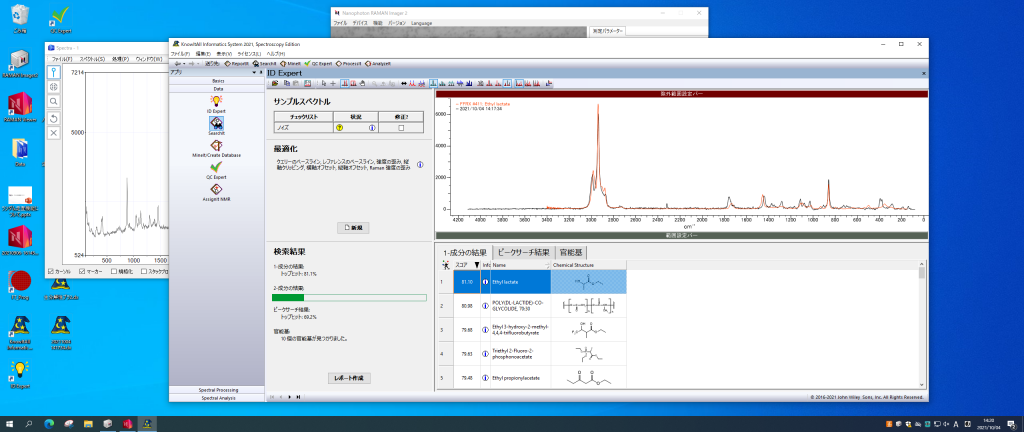Email Magazine
Raman microscope(10/27/2021)
As a beginner in Raman microscopy, I would like to report on my journey to become proficient in using the instrument. In the first installment of this series, I touched the instrument hesitantly, focused on it, pressed the “Start Measurement” button, and the Raman spectrum appeared on the screen. I was really surprised at how easy it was. In this article, I will try to check the Raman spectrum against the database. (E-mail Newsletter editor-in-chief / freelance writer Takeshi Nemoto)

“This project started from the idea of “I wish I could use a Raman microscope by myself. “This project started from the idea of “I want to measure the plastics and foods around me, find out their components, and see the distribution of each component.
Ms. Mariko Adachi (Senior Engineer, Sales & Applications, Nanophoton), who is in charge of teaching us how to operate the software, prepared a clear file as a sample.

Previously, we first measured biodegradable plastics and obtained this result.

The next step is to check the data against the database. According to Wiley’s website, the KnowItAll Raman spectral library is one of the world’s largest Raman spectral databases with over 25,000 spectra. It contains spectra of a wide range of compounds including monomers, polymers, organic compounds, inorganic compounds, etc. It also registers not only spectra but also physical property information and chemical structure formulas.
Now let’s quickly check the ingredients of the clear file against the database. First, we will save the data for KnowItAll.

I operated from the screen of the obtained spectrum and saved it.
Next, I started KnowItAll and searched with the saved data. The results came up immediately.

The top result was “Ethyl lactate” and the second was “POLY(DL-LACTIDE)-CO-GLYCOLIDE, 70:30”. Since our goal this time is to be able to use the database, we will not think too much about this result. However, since polylactic acid and copolymers of lactic acid and glycolic acid are biodegradable plastics, I think we got a pretty good result.
I also measured a clear transparent file and queried the database; KnowItAll displays the spectrum data in a state that is reversed from the first spectrum data, so I restored it.

As a result of the search, the first number was “Homopolymer, reference”, the second was “Block Copolymer, reference”, and the third was “Polypropylene EOD”. It seems that the material is polypropylene.
In the past, with the help of our employees, we have measured packaging films and containers of ham, tofu, natto, mayonnaise, etc. under the Raman microscope (see the article on October 14, 2020), and polypropylene was detected at that time as well. Polypropylene has moisture-proof and antistatic properties, and is used in a variety of packaging materials.
That’s all for this time. It took me about an hour after sitting in front of the Raman microscope to be able to query the database. Below is the data that Ms. Adachi prepared for us. The black one is a transparent clear file and the red one is a biodegradable plastic clear file.